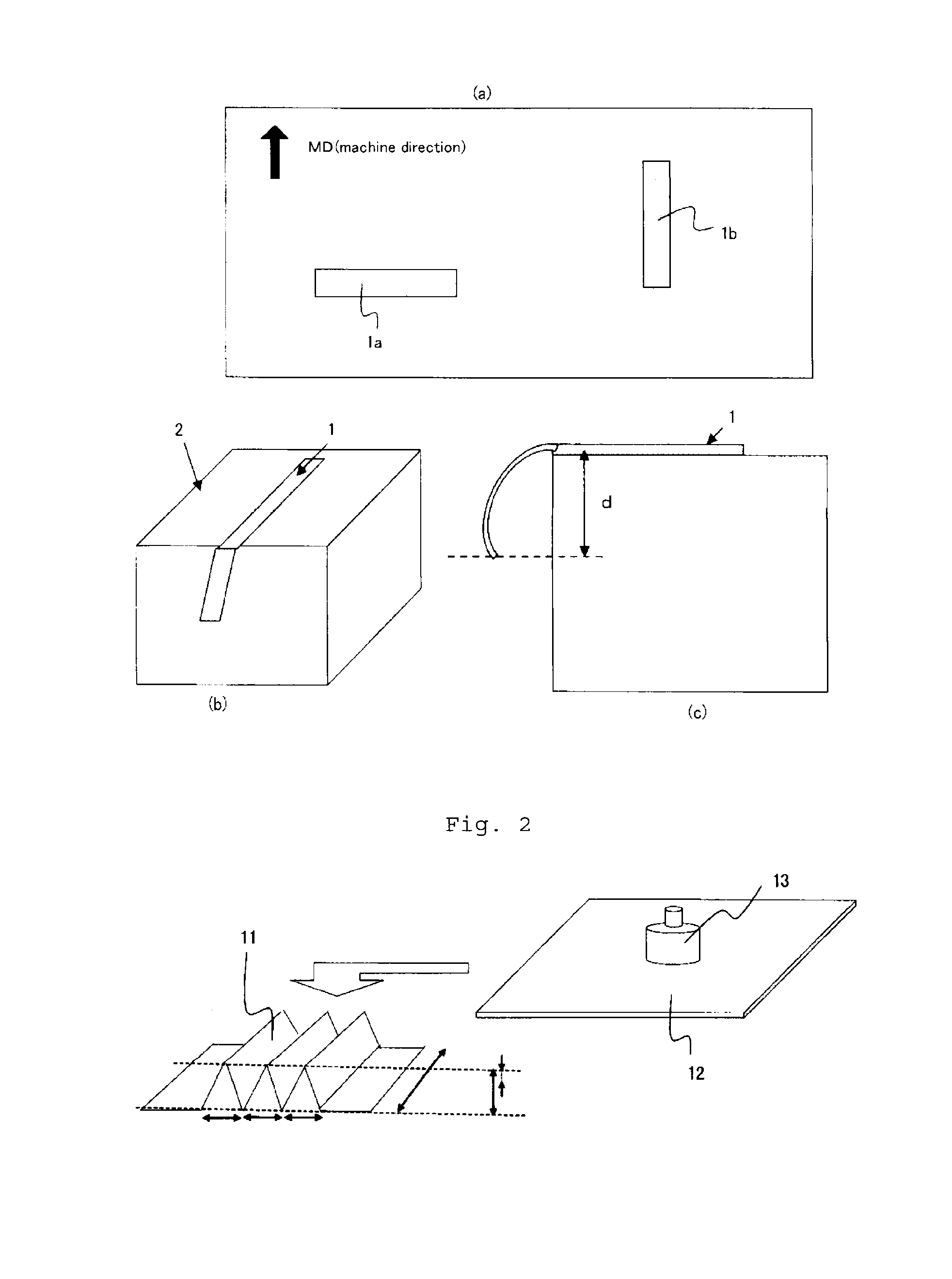Nonwoven sheet, process for producing the same, and filter
a technology of nonwoven fabric and process, applied in the field of thin nonwoven fabric, can solve the problems of unsuitable thin nonwoven fabric, unfavorable mass production of such a nonwoven fabric, and unfavorable nonwoven fabric thickness, etc., to achieve excellent formability, improve stiffness, and excellent pleatability
- Summary
- Abstract
- Description
- Claims
- Application Information
AI Technical Summary
Benefits of technology
Problems solved by technology
Method used
Image
Examples
example 1
[0149]A sheath-core form conjugated staple fiber (“Sofista” manufactured by Kuraray Co., Ltd., 3.3 dtex, 51 mm in length) was prepared as a moistenable-thermal adhesive fiber. The core component of the conjugated staple fiber comprised a poly(ethylene terephthalate) and the sheath component of the conjugated staple fiber comprised an ethylene-vinyl alcohol copolymer (the ethylene content was 44 mol %, the degree of saponification was 98.4 mol %, and the mass ratio of the sheath relative to the core was 50 / 50).
[0150]Using the sheath-core form conjugated staple fiber (100% by mass), a web was prepared by a semi-random carding process. Then four sheets of the webs were put in layers to give a card web having a total basis weight of about 125 g / m2.
[0151]The resulting card web was transferred to a belt conveyor equipped with a 50-mesh stainless-steel endless net having a width of 500 mm.
[0152]Incidentally, the belt conveyor comprised a pair of a lower conveyor and an upper conveyor. Each...
example 2
[0158]A fiber aggregate nonwoven structural member was obtained in the same manner as in Example 1 except for the following: a moistenable-thermal adhesive fiber used was the same as the sheath-core form conjugated staple fiber used in Example 1 except that the fineness was 2.2 dtex. The obtained fiber aggregate nonwoven structural member had a very thin plate-like shape having a thickness of 0.92 mm, and showed the same flexural rigidity and good forming processability as those of the fiber aggregate nonwoven structural member of Example 1.
example 3
[0159]A fiber aggregate nonwoven structural member was obtained in the same manner as in Example 1 except for the following: a moistenable-thermal adhesive fiber used was the same as the sheath-core form conjugated staple fiber used in Example 1 except that the fineness was 1.7 dtex. The obtained fiber aggregate nonwoven structural member had a very thin plate-like shape having a thickness of 0.99 mm, and showed the same flexural rigidity and good forming processability as those of the fiber aggregate nonwoven structural member of Example 1.
PUM
| Property | Measurement | Unit |
|---|---|---|
| Thickness | aaaaa | aaaaa |
| Thickness | aaaaa | aaaaa |
| Thickness | aaaaa | aaaaa |
Abstract
Description
Claims
Application Information
 Login to View More
Login to View More - R&D
- Intellectual Property
- Life Sciences
- Materials
- Tech Scout
- Unparalleled Data Quality
- Higher Quality Content
- 60% Fewer Hallucinations
Browse by: Latest US Patents, China's latest patents, Technical Efficacy Thesaurus, Application Domain, Technology Topic, Popular Technical Reports.
© 2025 PatSnap. All rights reserved.Legal|Privacy policy|Modern Slavery Act Transparency Statement|Sitemap|About US| Contact US: help@patsnap.com


